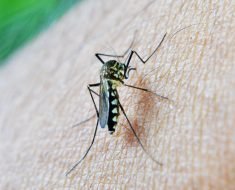Occurrence of Rift Valley Fever (RVF) has often been linked with El Niño rainfall. To curb future outbreaks of RVF, M. Kariuki Njenga and colleagues carried out enhanced syndromic surveillance of 22 high-risk RVF Kenyan counties to collect data on RVF-associated syndromes and risk factors in livestock from November 2015 through February 2016. Their research, recently published in PLOS Neglected Tropical Diseases, could provide the first step toward establishing a national syndromic surveillance system for livestock in Kenya.
Routine livestock surveillance in Kenya is primarily passive, with farmers reporting animal illness to public and private veterinarians, rather than routine check-ups being performed on the livestock. The enhanced surveillance system consisted of an RVF Alert Center that received, compiled and reported the surveillance data on a weekly basis from both the sub-county veterinary officers (SCVOs) who carried out the surveillance at sub-county level, and the livestock farmers. To evaluate the relationship between the reported syndromes and rainfall, the researchers compared the weekly livestock reports with reports of flooding and mosquito swarms.
All herds had reports of bleeding, abortions or death. Observers also reported 216 out of 362 livestock cases when mosquito swarms were observed, as compared to 211 reported cases when there was no flooding. The researchers identified 69 suspected RVF cases from 45 farms, and from this data 24 cases from 18 farms met the definition of a probable RVF herd. This pilot, though focused on a select number of farmers during the light rainfall season, showed that the number of reports of abortions and hemorrhagic disease were highest in the months that reported the highest rainfall.
Source: Read Full Article





